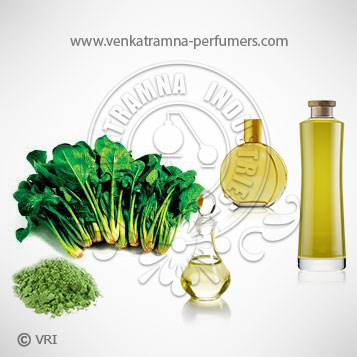
| Botanical Name | Not Applicable |
| Common Name | Chlorophyll pigments, CZE and Synthetic chlorophyll |
| Country of Origin | China |
| Solubility | Oil soluble |
| Specific Gravity | 1.130–1.35 @ 20°C |
| Optical Rotation | (-)1.5 –(-)4 @ 15°C |
| Refrective Index | 1.044 –1.054@ 20°C |
| PlantPart | Leaves |
| Bland With | It blends well with olive and other essential oils. |
| CAS No | 11006-34-1 |
| Flash Point | > 200.00 °F |
| Extraction Method | Extraction |
Chlorophyllin, a food additive, is a water-soluble salt obtained by alkaline hydrolysis of chlorophyll with substitution of the magnesium by copper and methyl and phytyl ester groups by sodium and potassium. It is an active ingredient used in variety of internally-taken preparations intended to reduce odors associated with incontinence, colostomies and similar procedures.
Chlorophyll is a green pigment found in most plants, algae, and certain bacteria. As all leaves and thus all leafy vegetables contain chlorophyll, it is one of the oldest and most widely consumed pigments in our diet. As it has been in the human diet forever, it can be considered one of the most safe food components. Chlorophyll plays an important role in plants in the photosynthesis, the mechanism by which plants acquire energy.
Color : Greenish with pigment odor,
Aroma : Characteristic Chlorophil
Its main components include copper chlorophyll trisodium and copper chlorophyll tartrate.
Available as a topical preparation, it is useful for both treatment and odor control of wounds, injuries, and other skin conditions. It has also gained importance as a food colorant and dietary supplement with its clear chemo-preventive activities. The intense color of chlorophyll is valuable as a commercial pigment and used as a green dye for food, toothpaste, detergents and cosmetics.